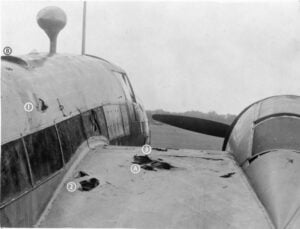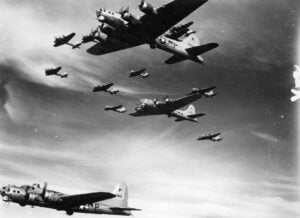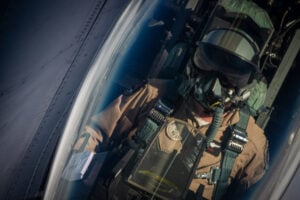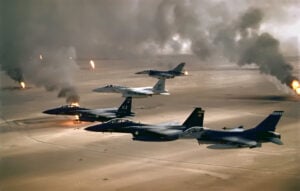5 of the Deadliest U.S. Aircraft Carrier Disasters of WWII
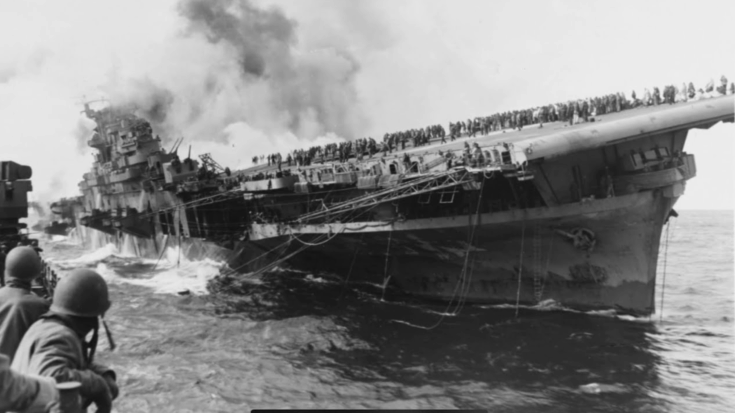
Unauthorized History of the Pacific War Podcast / YouTube
During World War II, serving aboard an American aircraft carrier came with great risk. These vessels were not only floating airstrips but also packed with aviation fuel, live bombs, and hundreds of crewmen working in tight quarters. A single hit could trigger fires, explosions, or even cause the entire ship to sink. Their importance in naval warfare made them top targets for Japanese aircraft, submarines, and surface ships. This list recalls five of the most tragic U.S. aircraft carrier disasters of the war.
USS Bismarck Sea
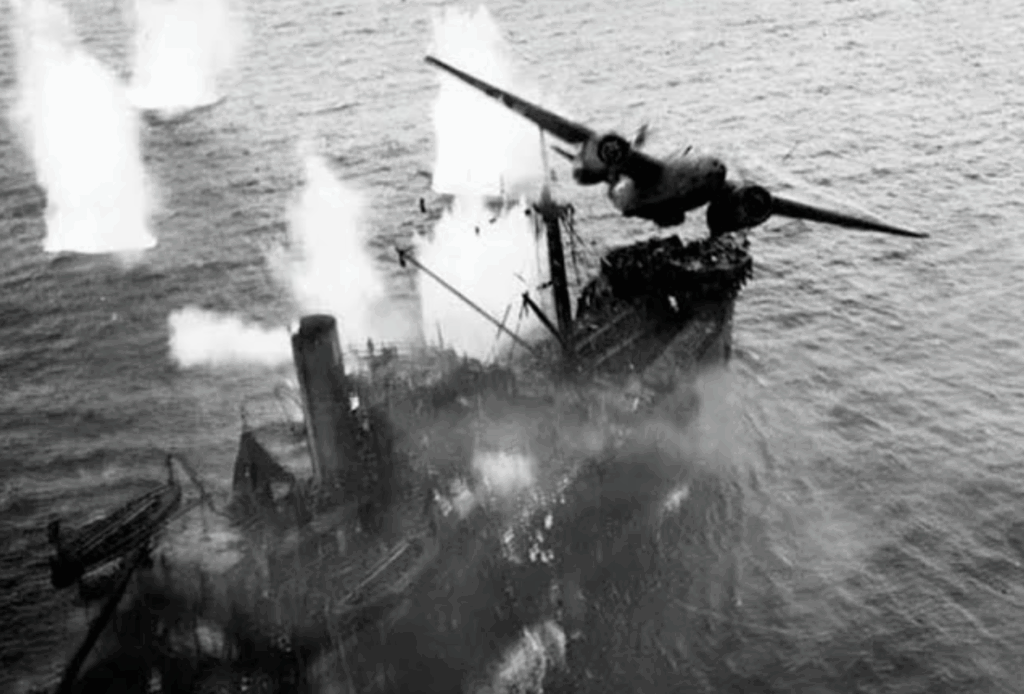
During the Iwo Jima campaign in February 1945, the escort carrier Bismarck Sea took on aircraft from the damaged Saratoga. These planes were parked below deck, still fueled and armed. At sunset, a kamikaze aircraft struck the ship, crashing near the magazines.
Fires spread quickly, and a second plane hit the rear elevator area, triggering more explosions. Firefighting efforts failed as systems were disabled. With the ship beyond saving, the crew was forced to abandon it. Of the nearly 900 men aboard, 318 were lost. Bismarck Sea was the last U.S. carrier sunk in World War II.
USS Princeton
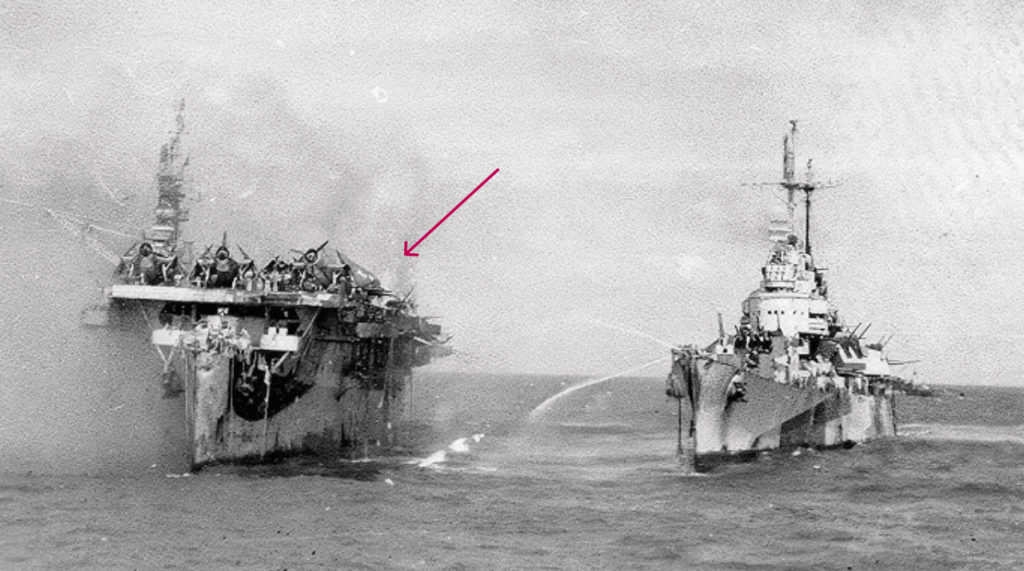
While supporting strikes on Luzon, the light carrier Princeton was hit by a bomb from a Japanese dive bomber. It exploded below deck, starting large fires. Support ships tried to assist, including the cruiser Birmingham, which pulled alongside to help fight the fires.
A powerful explosion ripped through Princeton, heavily damaging Birmingham and killing 241 of its crew. Princeton lost 108 sailors of its own. Later that afternoon, further explosions forced the crew to abandon ship. In total, 349 men were killed before the damaged carrier was scuttled.
USS Bunker Hill
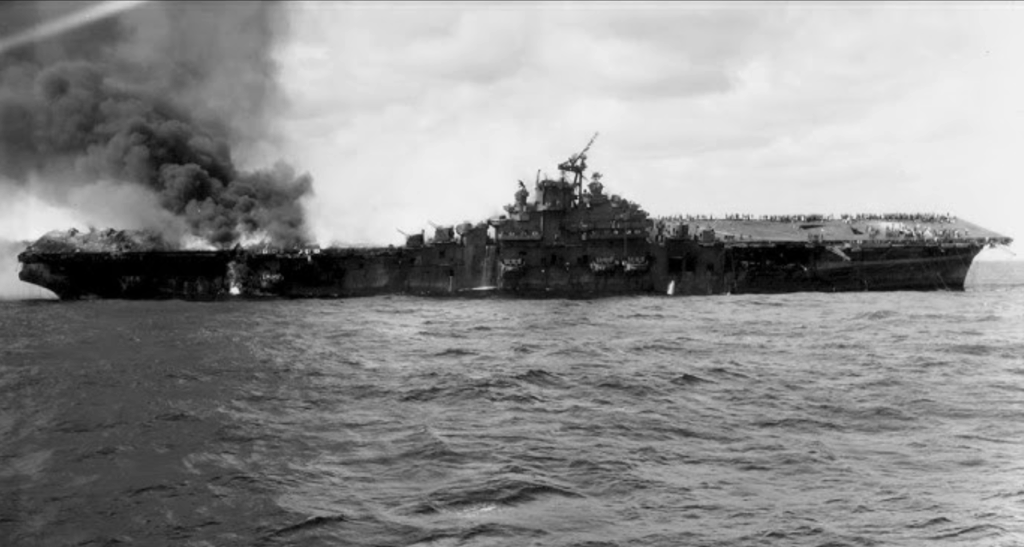
On May 8, 1945, Bunker Hill was hit by two kamikaze planes within 30 seconds while supporting the Okinawa invasion. The first dropped a bomb that tore through the flight deck before crashing into parked planes. The second struck near the island structure, setting off more explosions.
The attack killed 396 crewmen and wounded 264 others, including members of the admiral’s staff. Fires and ammunition explosions caused serious damage. Still, the ship managed to sail to safety on its own power. She was later repaired but remained out of service.
USS Liscome Bay
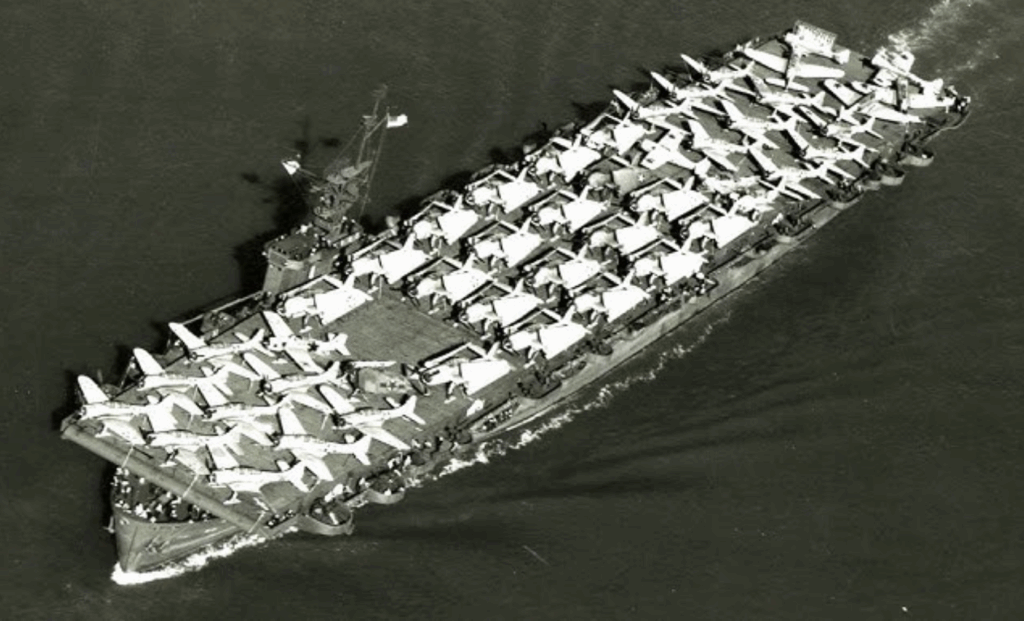
Before sunrise on November 24, 1943, Liscome Bay was struck by a torpedo from Japanese submarine I-175 near the Gilbert Islands. The torpedo hit near the aft engine room, right below the bomb magazine. The explosion tore off the ship’s rear and caused secondary blasts.
Flames engulfed the vessel, and debris landed on nearby ships. The carrier sank in just over 20 minutes, taking 702 men with her. Only 272 survived. Among the dead was Rear Admiral Henry Mullinnix and cook Doris Miller, who had become known for his bravery at Pearl Harbor.
USS Franklin
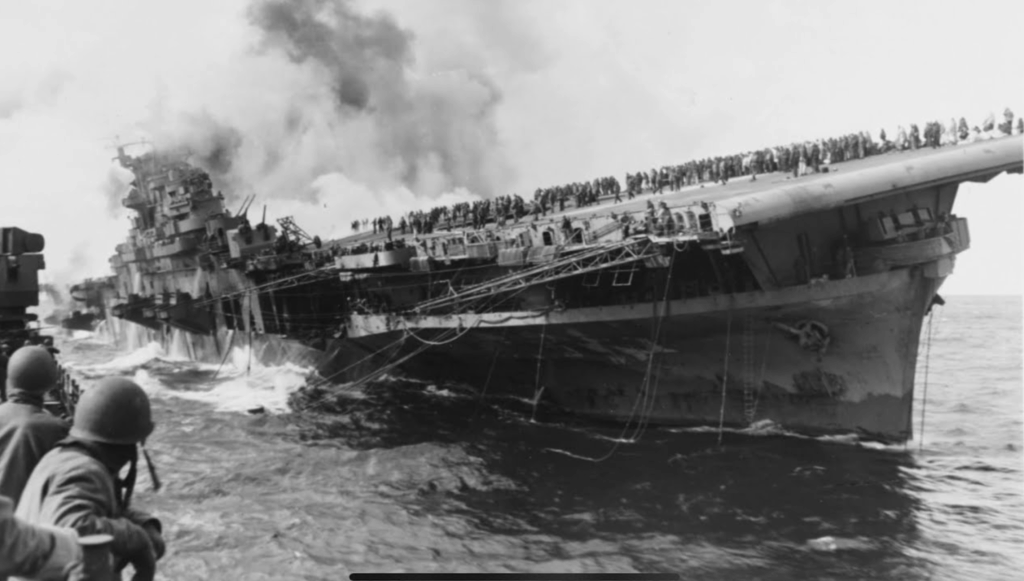
Franklin had recently returned to service after earlier damage when she was hit on March 19, 1945, off the coast of Japan. A single Japanese plane dropped two bombs on the flight deck, where fueled and armed planes were preparing for takeoff. The resulting chain of explosions ripped through the ship.
Fires burned out of control, and dozens of aircraft exploded or caught fire. Despite the chaos, hundreds of sailors worked to save the ship. The attack killed 802 crew members and wounded 487, making it the deadliest carrier disaster for the U.S. Navy in the war. The ship was eventually repaired, but never returned to combat duty.
Honorable mentions:
USS Saratoga – By 1945, USS Saratoga was one of the oldest carriers in the fleet. On February 21 near Iwo Jima, it suffered a devastating attack from 20 enemy aircraft, with seven kamikaze planes breaking through defenses. Fires destroyed large sections of the ship, killing 123 crew members. Despite the damage, she remained afloat due to her sturdy design and was repaired but did not return to combat.
USS Ticonderoga – In early 1945 during South China Sea operations, Ticonderoga was hit by two kamikaze planes within 30 minutes. Fires spread on the flight deck, and the second strike killed key officers. Despite over 60 wounds, the captain directed damage control efforts. 143 crew members died, and the carrier had to withdraw for repairs, sending its aircraft to other ships.
USS Gambier Bay – On October 25, 1944, during the Battle off Samar, Gambier Bay faced a superior Japanese fleet, including battleships. Heavily outgunned, she was struck by enemy gunfire and abandoned after severe damage to her flight deck and engine room. She sank, becoming the only U.S. carrier lost solely to surface gunfire in WWII.
USS Wasp – In September 1942, while near Guadalcanal, USS Wasp was torpedoed by Japanese submarine I-19, igniting fires and rupturing fuel tanks. Unable to contain the flames, the crew abandoned ship after 40 minutes. Later, a U.S. destroyer sank the carrier to prevent capture, with 176 crew members lost.
USS Lexington – During the Battle of the Coral Sea, Lexington was hit by bombs and torpedoes, causing fires and listing. Though crews managed initial damage, leaking fuel ignited explosions later. Over 200 sailors died, and the ship was evacuated before being sunk by a U.S. destroyer to prevent capture.













